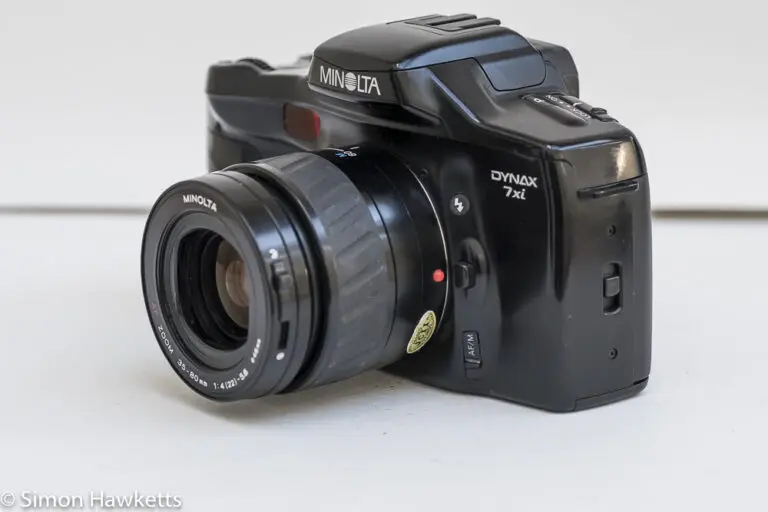Minolta Dynax 5000i
The Minolta Dynax 5000i SLR camera was produced by Minolta in Japan in the late 1980s as part of their second generation of autofocus, 35 mm cameras. It was a mid-range model in terms of feature set, although it was the entry level offering in their own camera range, sitting below the 7000i model.





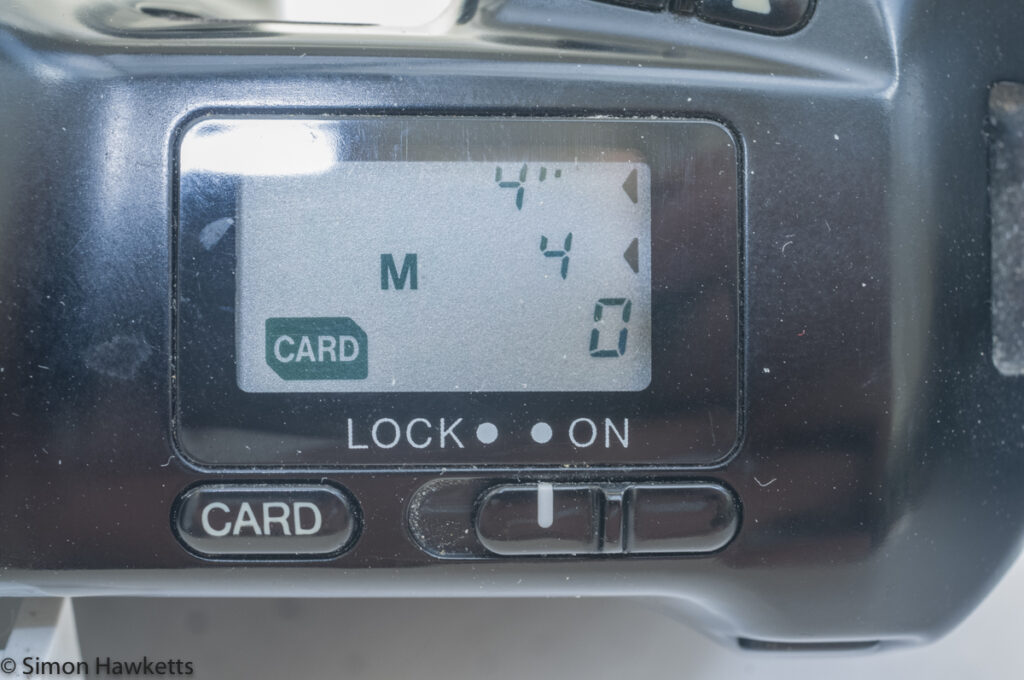

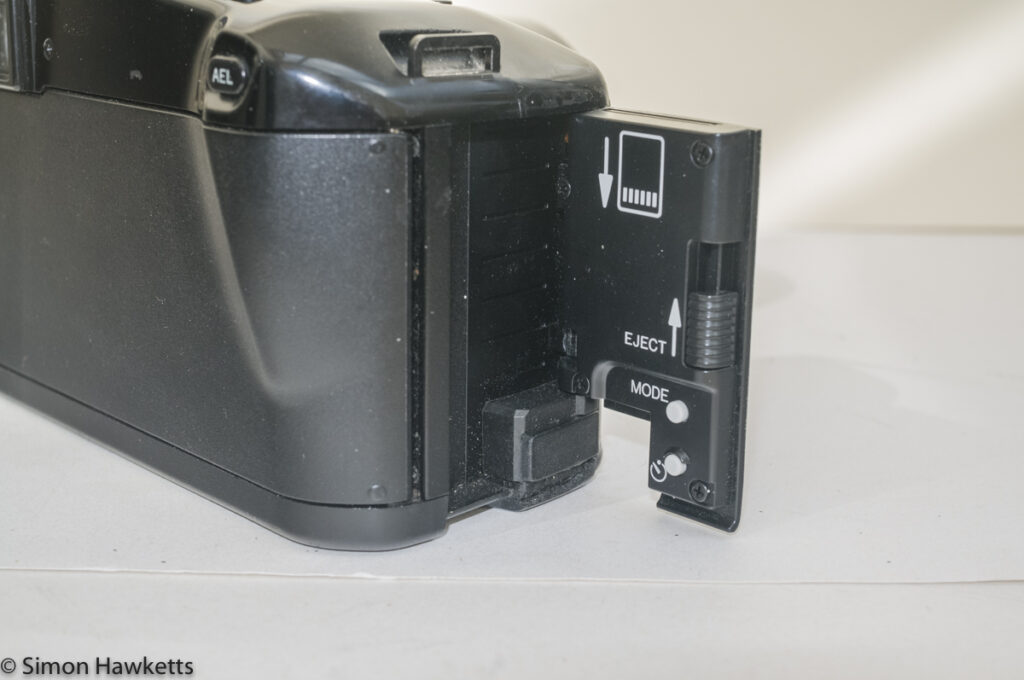
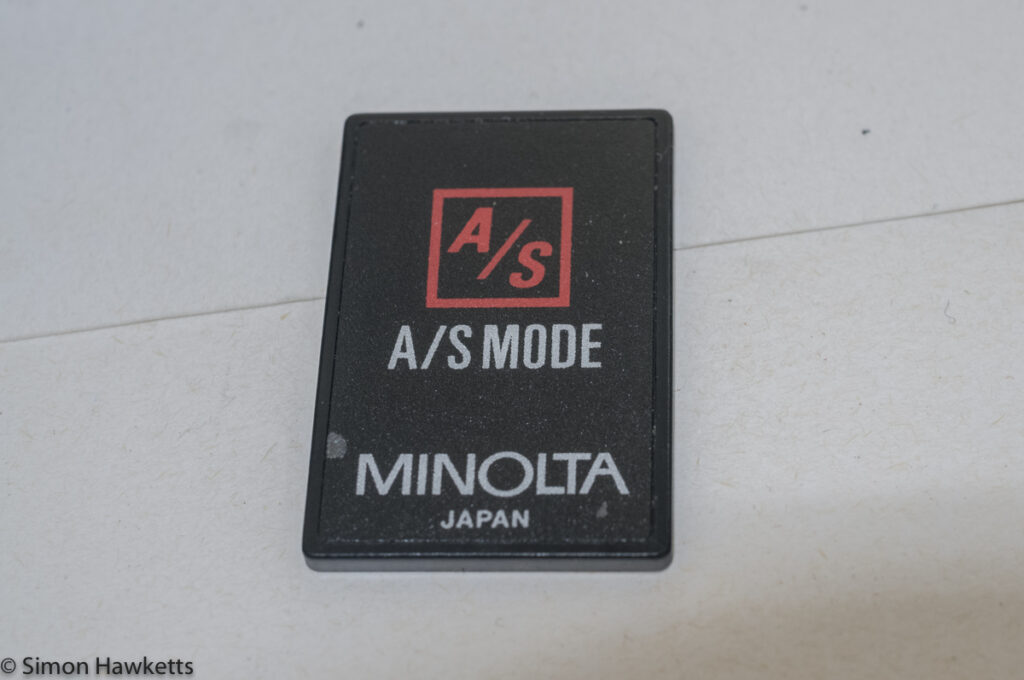
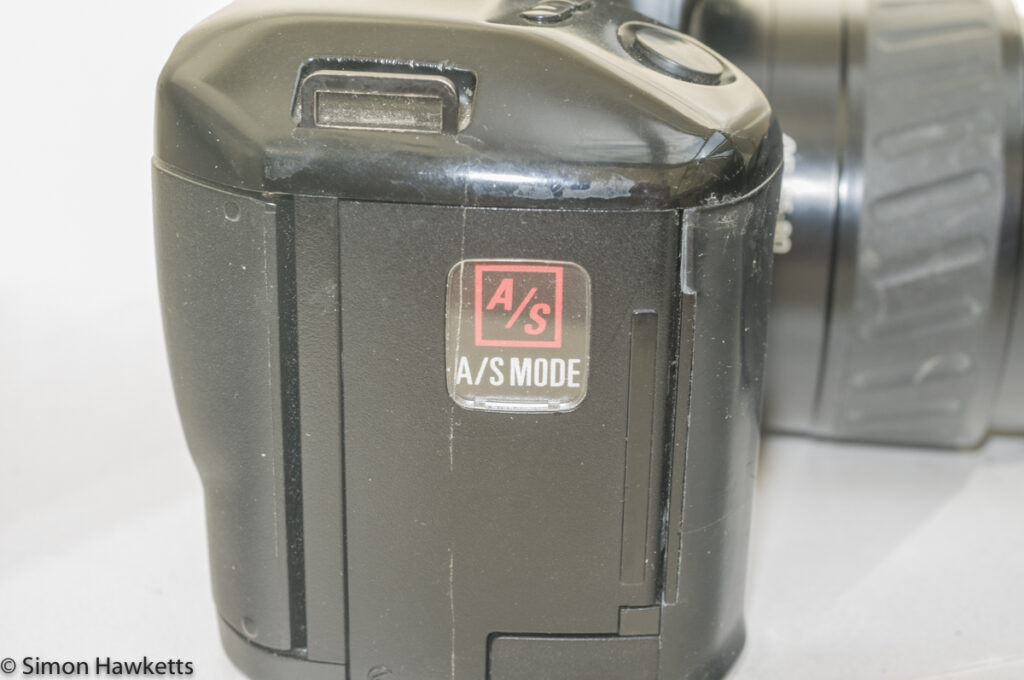
My Minolta Dynax 5000i Camera
I actually bought my copy of the Minolta Dynax 5000i quite a while ago as part of a collection of Minolta autofocus, 35 mm cameras which I picked up because there was a Dynax 7xi in the set.

Although I hadn’t bought the set for the 5000i specifically, I’m always pleased to increase my collection and found when I unpackaged the unit that it was in pretty good condition with no major damage or marks.
The eye cap which fits around the eyepiece is missing, but that is quite normal for many cameras – they just slide over the eyepiece and tend to get lost over the years. One very useful addition is the inclusion of the A/S Mode add on card – more of that later.
The only minor scratching on the body is around the grip, which shows a few marks from the hundreds of sets of nails which have pushed into it.
Mechanically the camera seems to work properly although the push buttons for the exposure and shutter release can sometimes be a bit slow to react which is probably because of tarnished connections. I suspect a bit of use would probably fix that. Although I haven’t yet run a film through it, the motor drive is obviously working, the exposure seems to be accurate and the flash and shutter appears to be in good condition.
Minolta Dynax 5000i Description
The late 1980s to early 1990s were not the best years for cameras in terms of the attractiveness of their physical design, and this camera is no better than any of the offerings of any other manufacturer. To be frank, it is an ugly, blocky looking camera with poor controls. I would say the only cameras which seem to be worse looking than this are some of the Ricoh offerings like the XR-X.
Leaving the looks aside, at the time the Dynax 5000i was produced, it was a reasonably well spec’ed camera for an entry level unit – or at least it had the capability to be a well spec’d camera depending on the options you purchased with it. The camera featured the same add-on feature cards which other Minolta cameras of the time had. These cards fit into a small slot in a door on the side of the camera, and were available to purchase to add additional features to the basic camera. Many different cards were produced to add auto exposure modes and particular picture effects like Portrait and Sports Action shooting.
In one sense I like this idea because it allows the photographer to expand his camera as his needs grow, but in another way I think it was simply a way for Minolta to make more money from the customer. They almost certainly didn’t have to do much software engineering to produce the cards – they would just consist of the modules which were already compiled into the higher end cameras.

The controls of the Dynax 5000i are typical of a late 1980s camera in that most operations are push button control (shown here to the left).
In my opinion, this is what makes the camera more difficult to use because changing the shutter speed, for example with a push button, is just not as efficient as using a dial. Each button push takes a certain amount of time to register, and if you need to move a long way and hold the button, this is also rate limited. Unfortunately, most camera manufacturers went through a phase of push button controls once cameras became electronic, until they started adding control dials.
As well as the two shutter speed buttons behind the release button, there is a button on the side of the lens barrel which is held to make the shutter speed buttons affect the aperture, which are used in Manual mode. If the card is used to put the camera in Aperture Priority mode, the main control buttons behind the release become aperture controls.
The viewfinder display is quite typical of an entry level camera of the day. There are just lights to indicate if the exposure and focus are OK, but no actual exposure information. The viewfinder itself is not terribly bright and has a single focus point in the middle of the display. If used in manual focus, there are no focus assist options; you just need to focus with the ground glass screen.
The camera is DX coded to set the film ISO speed, which works with films from 25 to 5000 ISO. At the time the camera was made that would have covered a very useful range – these days it probably covers every film available. If non DX coded film is used, the camera is set to ISO 1000.
If you own one of these cameras and want more information regarding the actual operations, the handbook is available on the brilliant camera manuals site and is linked below in the list of major spec points.
Minolta Dynax 5000i Specifications
- Minolta Dynax 5000i 35mm auto focus camera
- Basic camera with optional feature software cards available (at the time)
- Shutter speeds 4sec to 1/2000th sec + bulb – push button selectable
- Program mode auto exposure and Manual
- A/S Mode card provides Aperture and Shutter priority auto exposure
- Auto focus with manual override
- 2 sector TTL metering with Centre weighted ability
- Flash hot shoe / accessory socket
- AE Lock button
- DX coded film selection (25-5000) without override
- Flash on/off button
- Exposure go / no go indicator in Viewfinder
- Metal Minolta lens mount
- Built in flash and autofocus light
- Push button aperture / shutter speed controls
- Top Panel information LCD
- Electronic self timer
- Optional electronic remote shutter release cable available
- Optional Data Back available
- Powered by 2CR5 battery
- User manual available on-line here.
Discover more from Everything Vintage
Subscribe to get the latest posts sent to your email.




